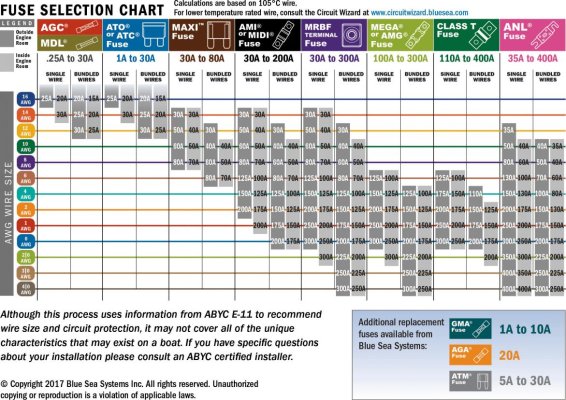MikeyG
Veteran Member
- Joined
- Jan 16, 2017
- Messages
- 28
- Location
- US
- Vessel Name
- "GILKEY" as charged
- Vessel Make
- '81 Schucker438
Getting ready to do a major refit/relocation of my battery bank and I guess I'm seeking confirmation of my thought process. 8 100amp lithium batteries feeding a 3000w victron charger/inverter. For cable size between batteries I believe I just need to size for maximum possible amperage draw which would theoretically be 250 amps, is it that simple? I understand the voltage drop/length map but the base size has me a little confused.
Thanks!
Thanks!

